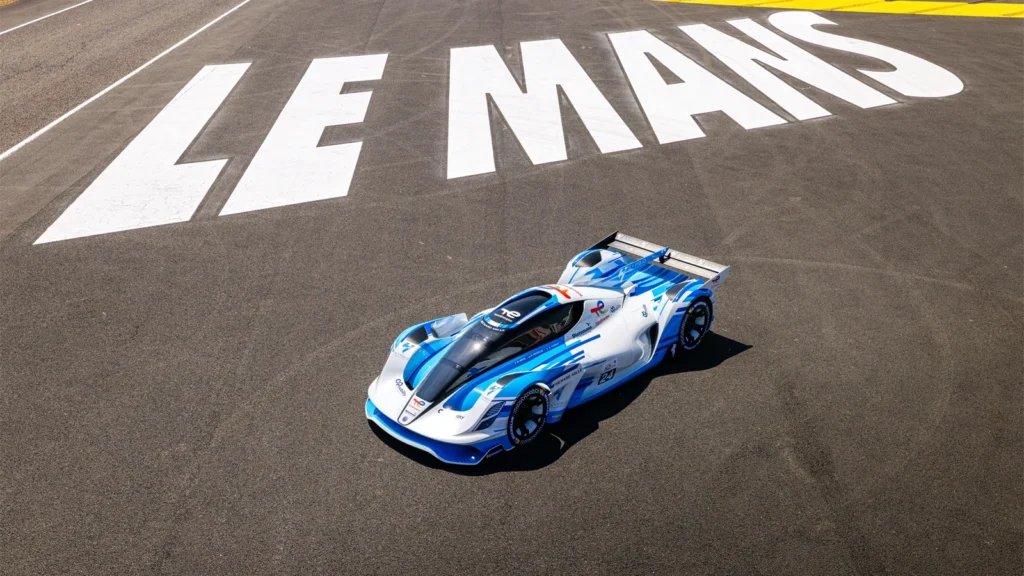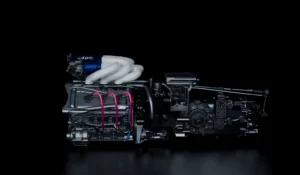Le Mans MissionH24: H24EVO ditches hydrogen gas for liquid hydrogen

Motorsport has never been short on innovation, but MissionH24’s latest play might just be its boldest yet.
In a statement at this year’s Hyvolution Paris 2025, the team confirmed that its H24EVO prototype – designed to showcase hydrogen’s potential at events like the 24 Hours of Le Mans – will swap high-pressure gaseous tanks for cryogenic liquid hydrogen.
It’s an advancement that, on the surface, sounds like a mere technicality. In reality, it’s rather a huge step toward making hydrogen racing really competitive.
Why liquid hydrogen over gas?
For starters, liquid hydrogen carries nearly double the energy density in the same tank volume than gaseous hydrogen.
The H24EVO was originally designed around two tanks at 700 bar, holding a total of 7.8kg. By cooling the hydrogen to about -253°C, the team expects to store up to 14kg of fuel – nearly doubling capacity.
Put simply, that means more laps before refuelling and the kind of range endurance racing demands.
Pierre Fillon, ACO President said: “MissionH24, with the H24EVO, is now embarking on a crucial new phase with a dual challenge: to engage liquid hydrogen in competition and to rival the competition from conventional combustion engines. This mission is essential to achieve zero CO2”.
Performance on par with GT3
Underneath the H24EVO’s sleek bodywork, there’s a 300kW Symbio fuel cell (though it’s capable of peaking closer to 650kW or about 870hp with help from a high-voltage battery).
The car’s being built to deliver speed and handling on par with established GT3 cars.
MissionH24 is targeting a top speed in the region of 340km/h (over 210 mph). That’s seriously quick by any measure and puts hydrogen tech in a real-world context against the best combustion-powered machinery.
Yet for all the talk about top speeds, what truly matters is lap time consistency, pit-stop strategy, and reliability across hours of race conditions.
By carrying more fuel onboard, the H24EVO should spend fewer minutes parked in the pits and more time out on track – exactly what you want in endurance racing.
What happens next
The revised timeline calls for design finalisation around May 2025. After that, the car will make a public appearance at Le Mans in June, before the bench-testing phase kicks off in October.
If all goes according to plan, the team will assemble a full-scale, track-ready prototype by February 2026.
The real milestone comes in April 2026, when the H24EVO is expected to roll out onto a circuit for its first tests with liquid hydrogen in the tank.
ACO President Pierre Fillon calls this “a crucial new phase” for the MissionH24 program, which is hoping to establish a hydrogen class in the FIA World Endurance Championship by 2028.
That’s just a handful of seasons away – enough time, they believe, to iron out complexities around storing, vaporising, and distributing cryogenic hydrogen.
Pioneering the future
While it’s easy to focus on the flashy claims of 340km/h top speeds, perhaps the most significant part of this project is what it represents for motorsport’s broader shift to cleaner energy.
If hydrogen prototypes can prove competitive over a four-hour or 24-hour race, it might just rewrite the script on how endurance racing is powered.
Bassel Aslan, MissionH24’s Technical Director said: “We’re embarking on a new challenge: introducing liquid hydrogen into racing.
“With an experienced partner in the field of on-board liquid hydrogen storage, and with all our partners, we are starting an exciting and promising collaboration.”
It’s a claim we’ve heard before with electric GT cars, but hydrogen offers an even more compelling vision for the long stints of endurance competition.
And if the H24EVO nails its liquid hydrogen debut, it’ll be one step closer to a future where Le Mans might just sound different but remain every bit as thrilling as the legends that came before.













